|
|
MATEMATICAS: ARCHIMEDES (CIRCULO, ELIPSE, PARABOLA E HIPERBOLA)
Triar un altre plafó de missatges |
 Primer
Primer
 Anterior
2 a 16 de 16
Següent
Anterior
2 a 16 de 16
Següent
 Darrer
Darrer

|
|
|
The cone hat and time.C - ONE 3 Trinity -mon-key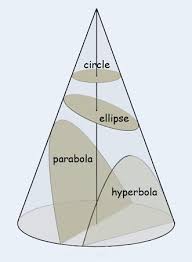 Conic sections - orbits - space and time Conic sections - orbits - space and time Mic-key 8 pointed star - golden age Mic-key 8 pointed star - golden age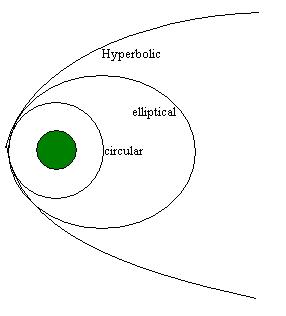 The lines traced out by orbits dominated by the gravity of a central source are conic sections: the shapes of the curves of intersection between a plane and a cone. Parabolic (1) and hyperbolic (3) orbits are escape orbits, whereas elliptical and circular orbits (2) are captive. The lines traced out by orbits dominated by the gravity of a central source are conic sections: the shapes of the curves of intersection between a plane and a cone. Parabolic (1) and hyperbolic (3) orbits are escape orbits, whereas elliptical and circular orbits (2) are captive. Squint eyed Mon-k-ey /12 Mon-keys with Broad Pit and Madelaine StowedBald cosmic egg head The orbital eccentricity of an astronomical object is a parameter that determines the amount by which its orbit around another body deviates from a perfect circle. A value of 0 is a circular orbit, values between 0 and 1 form an elliptical orbit, 1 is a parabolic escape orbit, and greater than 1 is a hyperbola. The term derives its name from the parameters of conic sections, as every Kepler orbit is a conic section. It is normally used for the isolated two-body problem, but extensions exist for objects following a rosette orbit through the galaxy. Squint eyed Mon-k-ey /12 Mon-keys with Broad Pit and Madelaine StowedBald cosmic egg head The orbital eccentricity of an astronomical object is a parameter that determines the amount by which its orbit around another body deviates from a perfect circle. A value of 0 is a circular orbit, values between 0 and 1 form an elliptical orbit, 1 is a parabolic escape orbit, and greater than 1 is a hyperbola. The term derives its name from the parameters of conic sections, as every Kepler orbit is a conic section. It is normally used for the isolated two-body problem, but extensions exist for objects following a rosette orbit through the galaxy.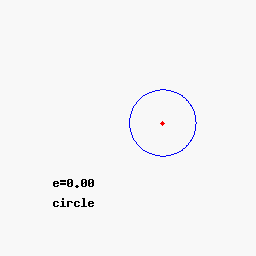 Mercury has the greatest orbital eccentricity of any planet in the Solar System (e=0.2056). Before 2006, Pluto was considered to be the planet with the most eccentric orbit (e=0.248). The Moon's value is 0.0549. Mercury has the greatest orbital eccentricity of any planet in the Solar System (e=0.2056). Before 2006, Pluto was considered to be the planet with the most eccentric orbit (e=0.248). The Moon's value is 0.0549.  Speedy Quicksilver Mercury messenger of the Gods, more speed more eccentricity - escaping orbits = chaos Speedy Quicksilver Mercury messenger of the Gods, more speed more eccentricity - escaping orbits = chaos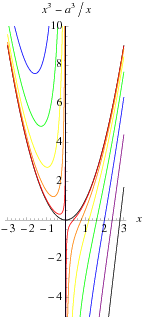 This is the hardest case and includes the serpentine curve as one of the subcases. The third class wasxy=ax³+bx²+cx+d,(4)which is called Newton's diverging parabolas. Newton's 66th curve was the trident of Newton. Newton's classification of cubics was criticized by Euler because it lacked generality. This is the hardest case and includes the serpentine curve as one of the subcases. The third class wasxy=ax³+bx²+cx+d,(4)which is called Newton's diverging parabolas. Newton's 66th curve was the trident of Newton. Newton's classification of cubics was criticized by Euler because it lacked generality.   Horus eye progression Horus eye progression  Archimedes' dissection of a parabolic segment into infinitely many triangles.Dissection of the parabolic segmentThe main idea of the proof is the dissection of the parabolic segment into infinitely many triangles, as shown in the figure to the right. Each of these triangles is inscribed in its own parabolic segment in the same way that the blue triangle is inscribed in the large segment.[edit]Areas of the trianglesIn propositions eighteen through twenty-one, Archimedes proves that the area of each green triangle is one eighth of the area of the blue triangle. From a modern point of view, this is because the green triangle has half the width and a fourth of the height:[1]By extension, each of the yellow triangles has one eighth the area of a green triangle, each of the red triangles has one eighth the area of a yellow triangle, and so on. Using the method of exhaustion, it follows that the total area of the parabolic segment is given by Archimedes' dissection of a parabolic segment into infinitely many triangles.Dissection of the parabolic segmentThe main idea of the proof is the dissection of the parabolic segment into infinitely many triangles, as shown in the figure to the right. Each of these triangles is inscribed in its own parabolic segment in the same way that the blue triangle is inscribed in the large segment.[edit]Areas of the trianglesIn propositions eighteen through twenty-one, Archimedes proves that the area of each green triangle is one eighth of the area of the blue triangle. From a modern point of view, this is because the green triangle has half the width and a fourth of the height:[1]By extension, each of the yellow triangles has one eighth the area of a green triangle, each of the red triangles has one eighth the area of a yellow triangle, and so on. Using the method of exhaustion, it follows that the total area of the parabolic segment is given by Here T represents the area of the large blue triangle, the second term represents the total area of the two green triangles, the third term represents the total area of the four yellow triangles, and so forth. This simplifies to give Here T represents the area of the large blue triangle, the second term represents the total area of the two green triangles, the third term represents the total area of the four yellow triangles, and so forth. This simplifies to give  Archimedes' proof that 1/4 + 1/16 + 1/64 + ... = 1/3Sum of the seriesTo complete the proof, Archimedes shows that Archimedes' proof that 1/4 + 1/16 + 1/64 + ... = 1/3Sum of the seriesTo complete the proof, Archimedes shows that The formula above is a geometric series—each successive term is one fourth of the previous term. In modern mathematics, that formula is a special case of the sum formula for a geometric series.Archimedes evaluates the sum using an entirely geometric method,[2] illustrated in the picture to the right. This picture shows a unit square which has been dissected into an infinity of smaller squares. Each successive purple square has one fourth the area of the previous square, with the total purple area being the sum The formula above is a geometric series—each successive term is one fourth of the previous term. In modern mathematics, that formula is a special case of the sum formula for a geometric series.Archimedes evaluates the sum using an entirely geometric method,[2] illustrated in the picture to the right. This picture shows a unit square which has been dissected into an infinity of smaller squares. Each successive purple square has one fourth the area of the previous square, with the total purple area being the sum However, the purple squares are congruent to either set of yellow squares, and so cover 1/3 of the area of the unit square. It follows that the series above sums to 4/3.4/3 = 8/6 Octagon order/Hexagon chaos = 1.3333... However, the purple squares are congruent to either set of yellow squares, and so cover 1/3 of the area of the unit square. It follows that the series above sums to 4/3.4/3 = 8/6 Octagon order/Hexagon chaos = 1.3333...
_________________
E.T.A.E
|
|
|
|
|
3,4,5 Khefren 53,4 - Jesus 33 - 53,4/33=1,618
5,12,13 triangle doubled = octagon rectangle
From 6 hexagon/chaos to 8 octagon/order
Ordo ab Chao 33 |
|
|
|
|
Interesting parabolic 4th dimensional break through Pennsylvania Station analogy of Mise en abyme or placed into abyss.
Note the parabolic Zeppelin flying above also.
A New Design for an Arched Penn Station
Mise en abyme
Posted on November 19, 2012 by Ariadna Barthe
Macrocosm and microcosm is an ancient Greek Neo-Platonic schema of seeing the same patterns reproduced in all levels of the cosmos, from the largest scale (macrocosm or universe-level) all the way down to the smallest scale (microcosm or sub-sub-atomic or even metaphysical-level). In the system the midpoint is Man, who summarizes the cosmos.
Manhattan Inside the Stage, towards Penn Station Doorway…
Posted on November 18, 2012 by Ariadna Barthe
Suggested title for the project: “Breaking the Fourth Wall” or “Mise en Abyme”
Posted on November 18, 2012 by Ariadna Barthe
Inspired in metatheater theories…
The fourth wall is the imaginary “wall” at the front of the stage in a traditional three-walled box set in a proscenium theatre, through which the audience sees the action in the world of the play. (In that case the making off of The fall and Rise of Pennsylvania Station Script)
The idea of the fourth wall was made explicit by philosopher and critic Denis Diderot and spread in 19th-century theatre with the advent of theatrical realism, which extended the idea to the imaginary boundary between any fictional work and its audience.
The City of Manhattan becomes a Theater were dramatic stories succeed, but sometimes, by playing with the revealing moments of the making off and zooming out, the audience engages with the fictional-real side of the project and the context rather than being the city is the stage…
Speaking directly to or otherwise acknowledging the audience through the camera in a film or television program, or through this imaginary wall in a play, is referred to as “breaking the fourth wall” and is considered a technique of metafiction, as it penetrates the boundaries normally set up by works of fiction.
Another possible title could be Mise en Abyme
Mise en abyme also mise en abîme is a term originally from the French and means “placed into abyss”.
The commonplace usage of this phrase is describing the visual experience of standing between two mirrors, seeing an infinite reproduction of one’s image, but it has several other meanings in the realm of the creative arts and literary theory. In Western art history, “mise en abyme” is a formal technique in which an image contains a smaller copy of itself, the sequence appearing to recur infinitely.
Tic Tac...
The author is an actress on this film
 City of Tomorrow - Tativille - car chaos fractals coming out the parabolic arches of the Tour Eiffel. Alpha/Aleph Ville Astana - Tomorrow city - Will Tomorrow Ever Come- Annie/Ani/Anubis It was gigantic, and became known as ‘Tativille’, possibly after Godard’s Alphaville (1965) But, of course, it wasn’t just any city; it was the city Jacques Tati needed to continue to explore his idea of the modern city, and, in order to get the shot that he required, the office blocks were in fact on wheels and tracks and could be moved at will. No ‘real city’ could have given him that flexibility. It was a gigantic enterprise.  Double headed parabolic beacks eagles which leaves the egg of cosmic creation at Delphi oracle. The egg contains the parabola and the hyperbola - Gaudi 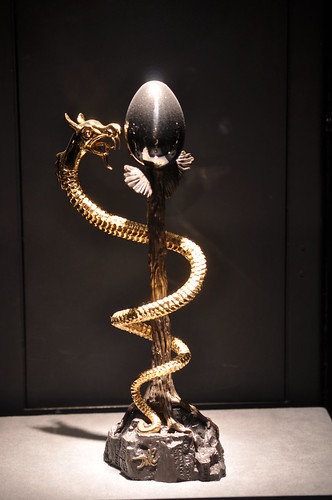 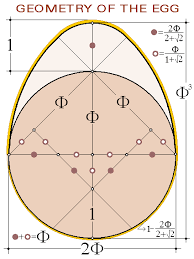
_________________
E.T.A.E
|
|
|
|
|
Venus, the morning star, Alpha and Omega - Jesus/Lucifer - 9 clockwise retrograde Venus towards the golden age, from 6 hexagon Star of David 30 to his offspring 8 octagon 33 - 8/6=1,33 Venus the Virgin Goddess, mother of Jesus. http://www.biblegateway.com/passage/?se ... ersion=KJVRevelation 22 13 I am Alpha and Omega, the beginning and the end, the first and the last. 16 I Jesus have sent mine angel to testify unto you these things in the churches. I am the root and the offspring of David, and the bright and morning star. |
|
|
|
|
|
A remaining mystery is the relationship between rectangles and the generation of parabola, the relationship between parabola and serpents, and the relationship between serpents and portals...
but such understandings would have been of the Gods, and for my part here i have outlined the terms in which the people who constructed the pillars would have seen them.
http://www.abovetopsecret.com/forum/thread915393/pg1
|
|
|
|
|
|
|
Magdalena Ridge Observatory
From Wikipedia, the free encyclopedia
Jump to navigationJump to search
The Magdalena Ridge Observatory (MRO) is an astronomical observatoryin Socorro County, New Mexico, about 32 kilometers (20 mi) west of the town of Socorro. The observatory is located in the Magdalena Mountains near the summit of South Baldy Mountain, adjacent to the Langmuir Laboratory for Atmospheric Research. Currently operational at the site (since 2008) is a 2.4-meter fast-tracking optical telescope,[1] and under construction is a ten-element optical interferometer.
The MRO Interferometer is an international scientific collaboration between New Mexico Institute of Mining and Technology (New Mexico Tech – NMT) and the Cavendish Astrophysics Group of University of Cambridge. The project is principally funded by the United States Naval Research Laboratory(NRL), which also supports the Navy Optical Interferometer near Flagstaff, Arizona. NRL is part of the Office of Naval Research.[2] New Mexico State University, New Mexico Highlands University, the University of Puerto Rico, and Los Alamos National Laboratory were originally partners, but have since withdrawn.[3]
Telescopes[edit]
2.4-meter telescope[edit]
The MRO 2.4-meter (7.9 ft) telescope is a Nasmyth design on an azimuth-elevation (az-el) mount. The telescope is capable of slew rates of 10 degrees per second, enabling it to observe artificial objects in low Earth orbit. The telescope is also used for asteroid studies and observations of other solar system objects.[4]The MRO 2.4-meter achieved first light on October 31, 2006, and began regular operations on September 1, 2008, after a commissioning phase that included tracking near-Earth asteroid 2007 WD5 for NASA.[5]
The telescope's primary mirror has a complicated history. It was built by Itek as part of a competition for the contract for the Hubble mirror (although it has a different prescription than the one used to construct the Hubble). When Perkin-Elmer was chosen instead as the Hubble contractor, the mirror was passed to a classified Air Force project. When this project was in turn discontinued, the mirror was transferred to the Magdalena Ridge Observatory, along with a blank for the secondary.[6][7]
As of May 2008, the facility is under a multi-year contract with NASA to provide follow-up astrometry and characterization data on near-Earth asteroids and comets as part of Spaceguard, and also collaborates with the Air Force to track and characterize satellites in GEO and LEO orbits.[8] On October 9, 2009, New Mexico Tech scientists used instruments on the MRO 2.4-meter and at the Etscorn Campus Observatory to observe controlled impacts of two NASA Centaur rockets at the southern polar region of the moon as part of the LCROSS Project.[9][10]
On October 23, 2015, it was announced that the MRO telescope will receive funding from the Federal Aviation Administration (FAA) in early 2016 to monitor the launch and re-entry of commercial space vehicles from Spaceport America.[11]
Magdalena Ridge Optical Interferometer[edit]

Artist's conception of the MROI array
The Magdalena Ridge Optical Interferometer (MROI) is an optical and near infraredinterferometer under construction at MRO. When the MROI is completed, it will have ten 1.4 m (55 in) telescopes located on three 340 m (1,120 ft) arms. Each arm will have nine stations where the telescopes can be positioned, and one telescope can be positioned at the center. The telescopes and their enclosures will be moved with a customized crane. Light from the telescopes' primary mirrors will be directed along the arms to the Beam Combining Facility (BCF). These pipes will be evacuated of all air in order to reduce distortions. Inside the BCF, the light will first travel through extensions of the pipes in the Delay Line Area, which will bring the light beams into phase. Then light will exit the vacuum pipes in the Beam Combining Area (BCA), where the light will be directed into one of three permanent sensors, or to a temporary instrument on a fourth table. The light will strike a total of eleven mirrors before entering a sensor.
The MROI was designed with three research areas in mind: star and planet formation, stellar accretion and mass loss, and active galactic nuclei.[12] An interferometer was selected because such devices can be built with higher resolving powerthan single-mirror telescopes, enabling them to image distant objects in greater detail. However, they do not provide more light-gathering capacity, as the total area of the mirrors is usually small.
MROI construction status[edit]
The basic design of MROI was completed in 2006. Construction of the facility began in August 2006 with the BCF building, which was completed in 2008. In July 2007, the contract for the design of the ten 1.4 m telescopes was awarded to Advanced Mechanical and Optical Systems S.A. (AMOS) of Belgium. In 2009 the design of the infrastructure of interferometer arms was completed, as was the design for the telescope enclosures. In 2010 construction of the arms began. Also in 2010 the first delay line was installed in the BCF.[13]
On October 19, 2015, New Mexico Tech signed a five-year, $25 million cooperative agreement with the Air Force Research Laboratory to support continued development of the interferometer at the observatory. Dr. Van Romero, Vice President of Research at Tech, said the new funding will allow the completion of three telescopes, mounts and enclosures on the mountaintop facility.[14]
New Mexico Exoplanet Spectroscopic Survey Instrument[edit]
The New Mexico Exoplanet Spectroscopic Survey Instrument (NESSI) is a ground-based instrument specifically designed to study the atmospheres of exoplanets.[15][16] The $3.5 million instrument is the first purpose-built device for the analysis of exoplanet atmospheres,[17] and is expected to have a powerful impact on the field of exoplanet characterization.[18]
The Principal Investigator is Michele Creech-Eakman at the New Mexico Institute of Mining and Technology, working with seven co-investigators.[18] The NESSI instrument was mounted on the observatory's 2.4 meter telescope. The instrument's first exoplanet observations began in April 2014.
See also[edit]
 |
|
|
|
|
The Very Large Array, Magdalena, New Mexico. This was my third time to visit the VLA.
|
|
|
|
|
|
 Primer Primer  Anterior 2 a 4 de 4 Siguiente Anterior 2 a 4 de 4 Siguiente  Último Último  |
|
|
|
|
|

3 years ago
Talking about Golden ratio, Euler's constant and natural logarithm, there is also another math constant. Call it Alisabana's constant... On July 24, 2015, Hilman P. Alisabana wrote on his blog (link: https://matematiku.wordpress.com/2015/07/24/prime-in-golden-tree/ ) about the prime number of the form 10^2k - 10^k - 1, where k = 253. On his blog, July 19, 2015, he also showed that the decimal expansion of the form 1/(10^2k - 10^k - 1) follows Fibonacci sequence, with the predictable decimal constant of digit number k. ( Link : https://matematiku.wordpress.com/2015/07/19/golden-ratio/ ) More generally, if x on the quadratic equations x^2 - x - 1 = 0 is replaced by u^k then the real solution of k is simply k = ln(phi) / ln(u), where ln is natural logarithm, and phi is golden ratio. If u = e (Euler's constant) then k = ln(phi) = 0.48121182... That's the Alisabana's constant. The ln(phi) arises in Hyperbolic functions as inverse hyperbolic cosecant of 2, or inverse hyperbolic sine of 1/2, so that the problem of the Hyperbolic equations e^k - e^-k = 1 or e^2k - e^k - 1 = 0 have the real solution k = ln(phi) or e^k = phi, where e is Euler's constant and phi is golden ratio. (Link : https://matematiku.wordpress.com/2015/07/21/ln-phi-dalam-fungsi-hiperbolik/ see also : https://matematiku.wordpress.com/2015/07/22/ln-phi-continued-fraction/ ) #alisabanaconstant #alisabananumber #alisabana #prime #primenumber #bilanganprima #constant #goldenratio #rasioemas #eulerconstant #euler #logarithm #logaritma #naturallogarithm #numbertheory #teoribilangan #decimal #decimalexpansion #math #maths #mathematics #matematika
| | |
|
|
|
 Primer
Primer
 Anterior
2 a 16 de 16
Següent
Anterior
2 a 16 de 16
Següent
 Darrer
Darrer

|
|
| |
|
|
©2025 - Gabitos - Tots els drets reservats | |
|
|

